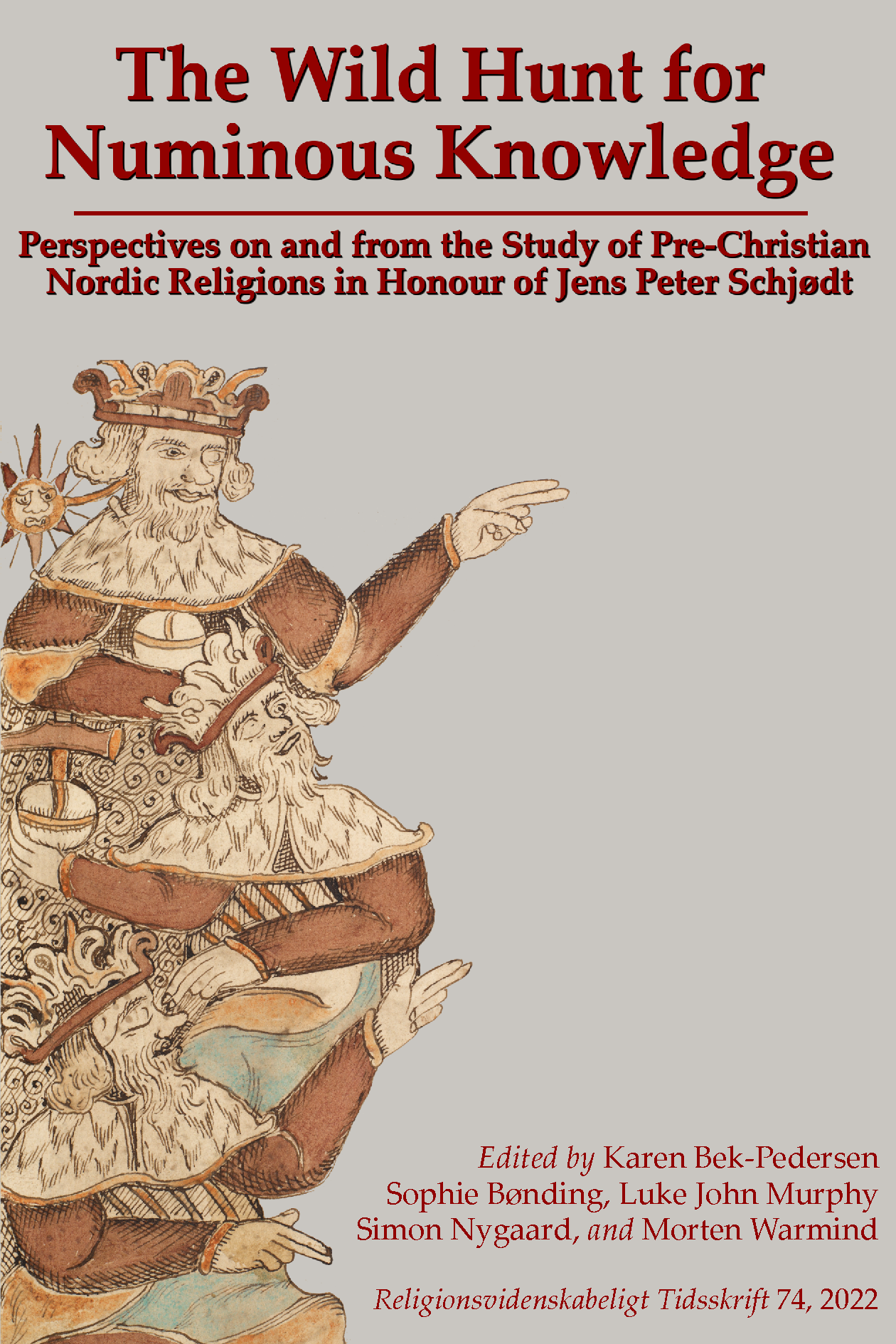Beyond ‘ása ok álfa’
Eddic Discourses of the Álfar and their Chthonic Semantic Centre
DOI:
https://doi.org/10.7146/rt.v74i.132108Nøgleord:
Álfar, semantic centre, discourse, eddic poetry, chthonic beings, vanir, pre-Christian Nordic religion, Nordic mythologyResumé
ABSTRACT: In the Poetic Edda, a multitude of understandings and ideas exist concerning the Otherworldly collective known as the álfar (Old Norse pl., sg. álfr). While the understandings are indeed many, they are not arbitrary. There seems to exist what Jens Peter Schjødt has termed a “semantic centre” for a number of “discourses” on the álfar. In this article, I will suggest various discourses of and construct a semantic centre for the álfar though an analysis of the stanzas of the Poetic Edda in which the álfar feature, supported when it is relevant by other Old Norse textual sources. I propose that constructing a semantic centre focusing on death and fertility, and thus viewing the álfar as chthonic beings, will help us make sense of the diversity in the discourses of the álfar in the eddic poems.
RESUME: Der findes en mængde forestillinger i eddadigtningen om den gruppe andenverdensvæsner, der kendes under navnet álfar (norrønt pl., sg. álfr). Forestillingerne er mange, men de er ikke arbitrære. Der synes at eksistere hvad Jens Peter Schjødt kalder et “semantisk centrum” fra hvilket forskellige “diskurser” kan siges at udgå. I denne artikel vil jeg foreslå forskellige diskurser om og konstruere et semantisk centrum for álfar gennem en analyse af de eddastrofer, hvori álfar optræder. Jeg foreslår, at ved at konstruere et semantisk centrum forbundet med død og frugtbarhed og således forbinde álfar med det chthoniske, vil de forskelligartede diskurser om álfar i eddadigtningen give bedre mening.
Downloads
Publiceret
Citation/Eksport
Nummer
Sektion
Licens
Alt publiceret materiale i RvT fra og med nr. 75 (2023) er underlagt en CC BY 4.0 licens, og forfatteren har ophavsretten dertil.
Forfatteren og RvT deler ophavsretten til materiale publiceret inden nr. 75





